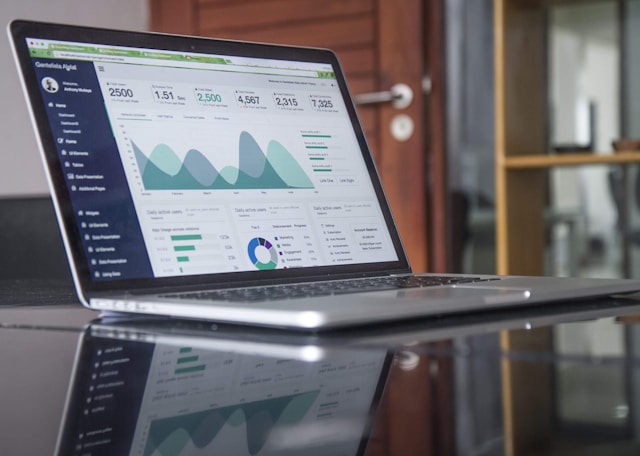Picture this : You open a website — maybe to check the weather, read a recipe, or, let’s be honest, procrastinate a little — and the page loads instantly. Clean visuals, snappy performance, and everything exactly where you want it. Pretty good, right? But what if I told you that behind that beautiful simplicity lies an often overlooked, planet-sized issue : the environmental impact of our digital lives?
The hidden environmental cost of the internet
The truth is, the internet isn’t quite as “weightless” as we like to imagine. Every webpage we visit, every tweet we send, and every Netflix binge consumes energy, often generated from fossil fuels, contributing directly to greenhouse gas emissions. Surprising, isn’t it? Web developers today aren’t just coding ; they’re indirectly shaping our planet’s future.
That’s where ecological web design — or, more simply, eco-friendly web development — comes in. It’s an emerging practice dedicated to reducing the environmental footprint of websites through energy-efficient design principles and smart development strategies. If you’ve never thought of sustainability in web terms, buckle up, because it’s about to get fascinating.
How websites impact the environment
First things first, how exactly does a website affect the environment? Let’s start at the source : servers and data centers. Every bit of digital information lives on physical servers humming away 24/7, consuming enormous amounts of electricity. Globally, data centers account for about 2% of the world’s electricity use. That’s roughly equivalent to the carbon footprint of the entire airline industry. Crazy, right?
But it’s not just servers. Every time your browser loads a heavy image, streams a high-resolution video, or crunches through unnecessary JavaScript, it uses extra energy. And multiplied across billions of internet users, those extra kilobytes quickly become extra megawatts.
Now, before we all collectively panic and swear off cat memes forever, there’s good news : small, strategic changes in how we design and develop websites can significantly reduce their carbon footprint.
Designing for sustainability
Eco-friendly websites usually adopt a minimalist approach — think clear layouts, fewer heavy graphics, and streamlined content. And here’s a bonus : minimalism isn’t just eco-friendly ; it usually translates into better user experience. Less clutter, faster load times, happier users.
Color choices matter too, believe it or not. Dark mode isn’t just trendy — it’s eco-friendly. Websites that use darker color schemes consume significantly less power on OLED screens. Even Google caught on, launching a dark theme for YouTube, Gmail, and Chrome. See? Sustainability doesn’t have to be boring.
Smart development strategies
But design only takes you halfway there. Let’s talk development. Energy efficiency at the coding level can dramatically reduce resource consumption. Here’s how :
- Optimize images and use next-gen formats like WebP.
- Compress files to keep bandwidth consumption low.
- Implement lazy loading — loading images or videos only when they’re about to be viewed.
- Minimize and optimize JavaScript to reduce CPU usage.
Content Delivery Networks (CDNs) also make a big difference. By hosting static files closer to users, CDNs cut down on data transfer distances, meaning faster load times and less energy burned. The farther data travels, the more energy it consumes, so shorter journeys make a substantial environmental difference.
Renewable web hosting
Then there’s renewable hosting. If your website is hosted by servers powered by fossil fuels, even the best optimization strategies will fall short. Switching to a web hosting provider powered by renewable energy — wind, solar, hydro — is a huge step forward. Providers like GreenGeeks and Kualo are leading this charge, offering affordable, eco-conscious hosting solutions.
Speaking of providers, transparency matters. When selecting hosting companies, look for providers openly committed to sustainability practices. Transparency ensures accountability, nudging more providers to prioritize renewable energy and better environmental practices.
Performance and measurement
And let’s not forget about performance. Google ranks faster websites higher, rewarding eco-friendly optimization indirectly. Fast sites mean users spend less time loading pages and more time engaging with content, driving up user satisfaction and sustainability at the same time.
Finally, measurement is critical. You can’t improve what you don’t measure. Tools like Website Carbon Calculator provide insights into your site’s environmental impact, offering concrete data you can act on. Regular audits keep you accountable, track progress, and reveal opportunities for further improvement.
The business case for eco-friendly web design
Ultimately, eco-friendly web design isn’t just an altruistic choice. It’s good business. Modern consumers increasingly care about sustainability. Websites that demonstrate clear environmental responsibility build brand loyalty, attract eco-conscious audiences, and stay ahead of regulatory curves.
We’re living through a crucial moment in digital history. Developers and designers today have the power to shape not only how the web looks but how it impacts the planet we share. Eco-friendly web design is no longer niche — it’s a necessity. And the best part? It’s entirely within our reach.
So, the next time you start a new web project, take a moment to think beyond aesthetics. Ask yourself : Could this be faster? Could this be lighter? Could this be more efficient?
Because in web design, just like everywhere else, less really is more — more sustainable, more responsible, and frankly, a whole lot cooler.
